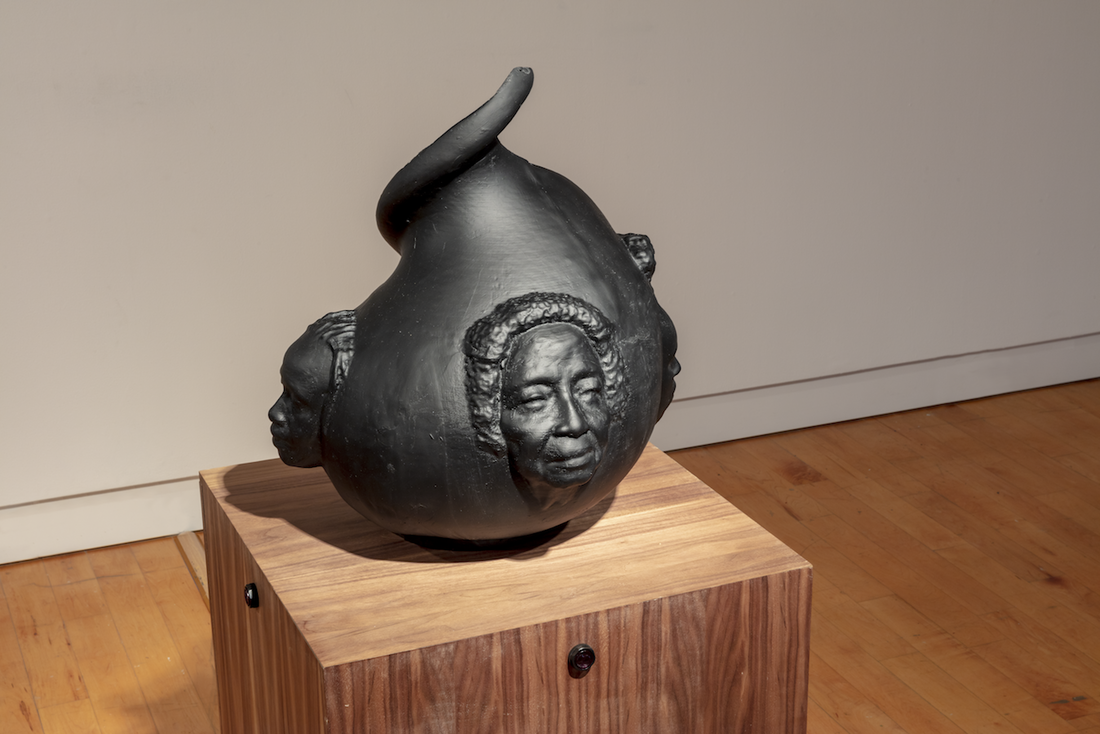Stephanie Dinkins’s project “Not The Only One” is a sculpture that tells the story of three generations of a close-knit, black American family, from its eldest member born in the American South in 1932 to its youngest, a biracial daughter navigating racial identity in a “Black Lives Matter” America. But it’s unlike most other sculptures in a major way — the story is told from the “mind” of a voice-interactive, artificial intelligence storyteller, whom Dinkins considers the “fourth generation of [the] family.”
Dinkins, an oral storyteller, joined the Human-Centered Artificial Intelligence Lab as an artist-in-residence two weeks ago as part of a pilot collaboration with the Sundance Institute’s New Frontier Labs. The Sundance Institute is a non-profit organization that supports artists through events like the Sundance Film Festival and programs like New Frontier Labs. It aids artists in publicly promoting their work, offers them mentorship, provides grants and helps them obtain resources like funding and technical advice from universities, labs and companies.
“It’s the first artist we’ve had [who works with] artificial intelligence, and many of our artists are not as deeply entrenched in the technology side of things as Stephanie,” said Ellen Oh, Director of Programs for the Office of the Vice President of the Arts.
While Dinkins was able to build the sculpture and develop its neural networks with the help of programmers from New York, she also felt that she needed more feedback to improve the technological aspects of her project. To this end, the New Frontier Labs helped her search for a lab whose research interests would be relevant to Dinkins’s project, according to interim director Ruthie Doyle.
The search led Dinkins to Stanford’s Human-Centered Artificial Intelligence Lab, and former New Frontier Labs director Kamal Sinclair began discussion with the Office of the Vice President of the Arts on potential collaboration. Oh and others from both Stanford and New Frontier Labs found similarities between Stanford’s long-term vision for its arts programs and New Frontier’s mission.
“We want to make Stanford a destination for the arts, a home for artists, and a thought leader in the future of our culture,” Oh said. “New Frontier has always been an experimental part of the [Sundance Film Festival], working with new artists, trying to use new materials and technologies in new ways, and grappling with the sociopolitical issues of our time.”
Oh said that the possibilities of collaboration “ticked off all the boxes of what we wanted to bring on campus,” one being an aspect of diversity of thought.
“It’s important that we have all different kinds of points-of-view,” Doyle said. “This makes the work that the scientists and technologists are doing much stronger just in the way that it makes the artists thinking about technology much stronger.”
In addition to funding for her residency, Dinkins received guidance from the Human-Centered Artificial Intelligence Lab in the form of feedback from professors.
“I have the opportunity to sit down with one of the world’s most prominent professors in natural language processing, Chris Manning,” Dinkins said, “and he and other professors give me advisory input.” Dinkins added that she received similar support from the Stanford Humanities Center through lunchtime meetings with fellows in the arts and humanities.
“We have conversations around where technology is, where it is going, and how we can guide the process from a humanist perspective,” she said.
Dinkins has also had the opportunity to discuss her project with other departments and organizations on campus as well, including the Institute for Diversity in the Arts and the departments of African and African-American Studies and Theater and Performance Studies. These conversations with leaders in a variety of fields have provided Dinkins with a uniquely, and fittingly, interdisciplinary perspective on her project.
“We’ve all recognized that this project is hard,” she admitted. “We’re looking at the same question even though we’ve arrived from different places; for me, I’ve arrived from my background as an artist, but the technologists have arrived from a different background.”
According to Dinkins, one of the most difficult problems she faces in her project is making the interactions between the sculpture and its viewers more genuine.
“When you talk to the sculpture, it’s goofy and weird,” she said. “It’s what Siri and Alexa are trying not to let us see. It talks like a three or four year old.”
Dinkins’s project is still subject to additional testing and alterations. In the process of further developing “Not the Only One,” she plans to participate in conferences and workshops to inspire other artists using artificial intelligence. In this way, the pilot program has broader implications that extend to Stanford’s efforts to offer more resources to artists.
“We are piloting different programs like this in an effort to build upon an arts incubator in the future,” Oh said. “That’s our long-range plan — to be able to continuously support artists in this way and to expose students to working artists.”
Contact Ajay Ravi at ajay4 ‘at’ stanford.edu.
